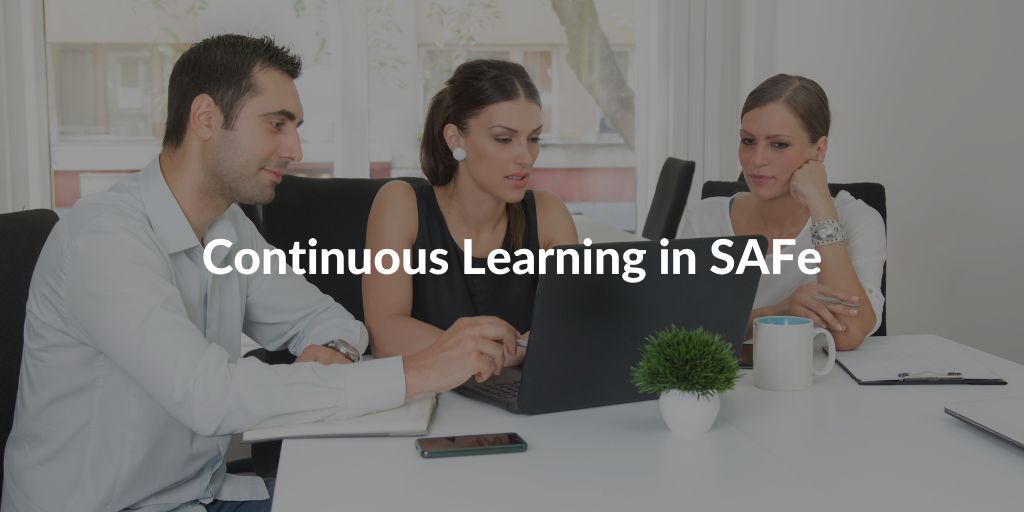Categories
Tags
Newsletter
Subscribe to the QRP International neswletter and get all the news on trends, useful contents and invitations to our upcoming events
Subscribe
The Scaled Agile Framework is a body of knowledge that includes structured guidance on values, planning and managing, roles and responsibilities. The Scaled Agile Framework (SAFe) is built around the seven core competencies of the Lean Enterprise. In this article we will discuss the last core competency; Continuous Learning in SAFe.
The Continuous Learning Culture competency describes a set of values and practices that encourage individuals and enterprises to continually increase knowledge, competence, performance, and innovation. This can be done by transforming into a learning organisation, committing to relentless improvement, and promoting a culture of innovation. It is one of the seven core competencies of the Lean Enterprise, of which all are essential to achieving Business Agility.
Even after mastering all the other competencies, principles and practices, enterprises will likely experience instability as the norm. There is a demand for continuous learning, personal growth, and process improvement. This is expressed in three dimensions:
A learning organisation will invest in and facilitate the ongoing growth of its employees, with the goal of having the organisation transform and adapt to an ever-changing world. When everyone in the organisation is continuously learning, it fuels the enterprise’s ability to dynamically transform itself. In this way, it is possible to anticipate and exploit opportunities that create a competitive advantage.
Learning organisations are proficient in creating, obtaining, and sharing knowledge, while evolving practices to include the new insights. Such organisations understand and unlock the intrinsic motivation of people to learn and gain mastery for the benefit of the enterprise
Innovation is one of the four pillars of the SAFe House of Lean. But the kind of change needed to compete in the digital age requires an innovation culture. This allows leaders to create an environment that supports creative thinking, curiosity, and challenging the current state of things. When an organisation has an innovation culture, employees are encouraged and enabled to:
To remain competitive, every part of the enterprise must focus on relentlessly improving its solutions, products, and processes. The Lean model for continuous improvement is based on a series of small, iterative, and incremental improvements and experiments. It’s crucial that the organisation learns the most promising answer to a problem. There are five key aspects of relentless improvement:
Too often organisations fall into the trap of assuming that the culture, processes, and products that led to today’s success will also guarantee future results. That mindset increases the risk of decline and failure. The enterprises that dominate its markets going forward will be adaptive learning organisations, with the ability to learn, innovate, and relentlessly improve more effectively and faster than their competition.
Competing in the digital age requires investment in both time and resources for innovation, built upon a culture of creative thinking and curiosity—an environment where norms can be challenged, and new products and processes emerge. Alongside this, relentless improvement acknowledges that sometimes an organisation will not survive.
Everyone in the organisation will be challenged to find and make incremental improvements. Priority and visibility has to be given to this work. A continuous learning culture will likely be the most effective way for this next generation of workers to relentlessly improve.
Also read:
Lean-Agile Leadership
Key SAFe Roles
Do you want to deepen your understanding of these concepts and learn how to combine strategy with execution? QRP International organises the Leading SAFe course. Visit the website or write to us for more information!
Source: Scaled Agile Framework